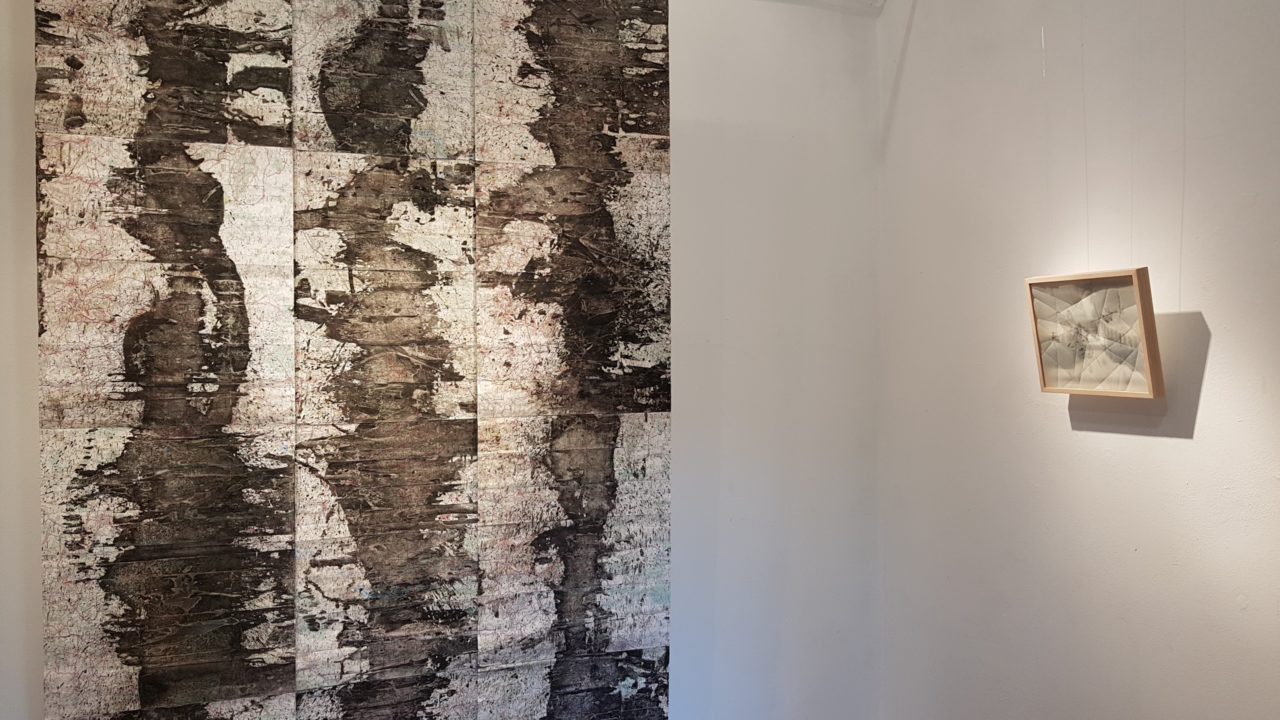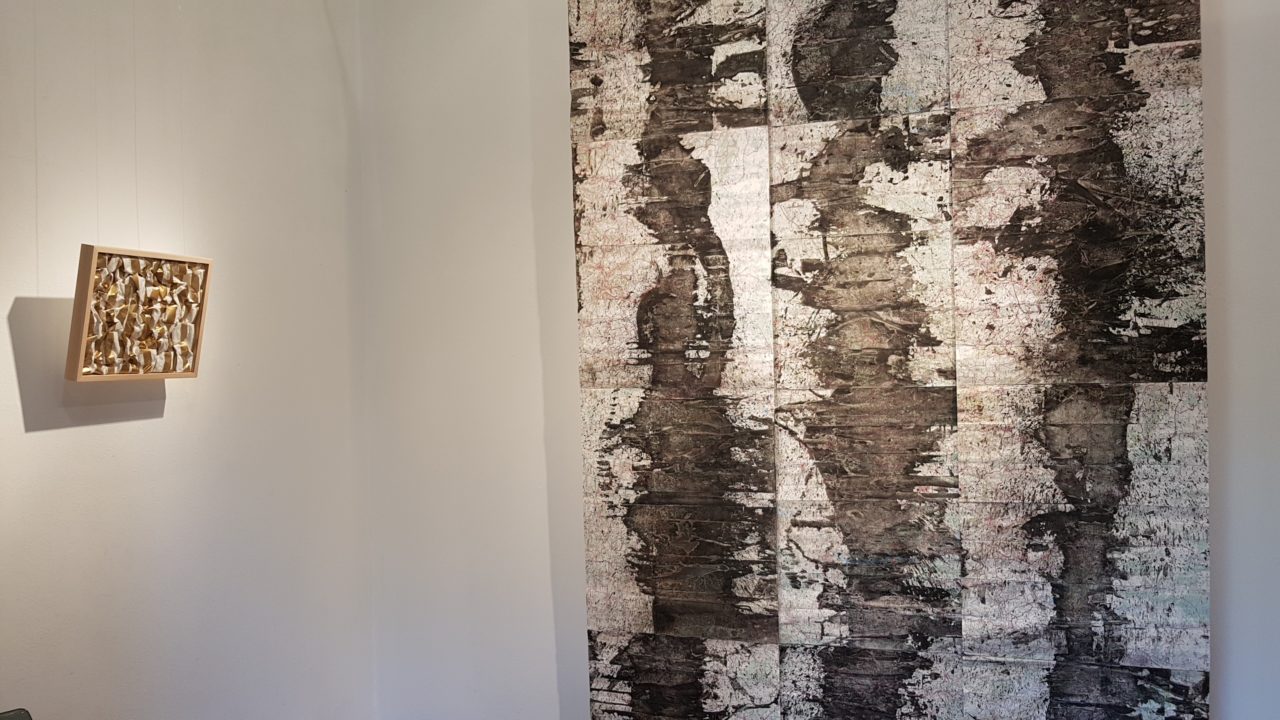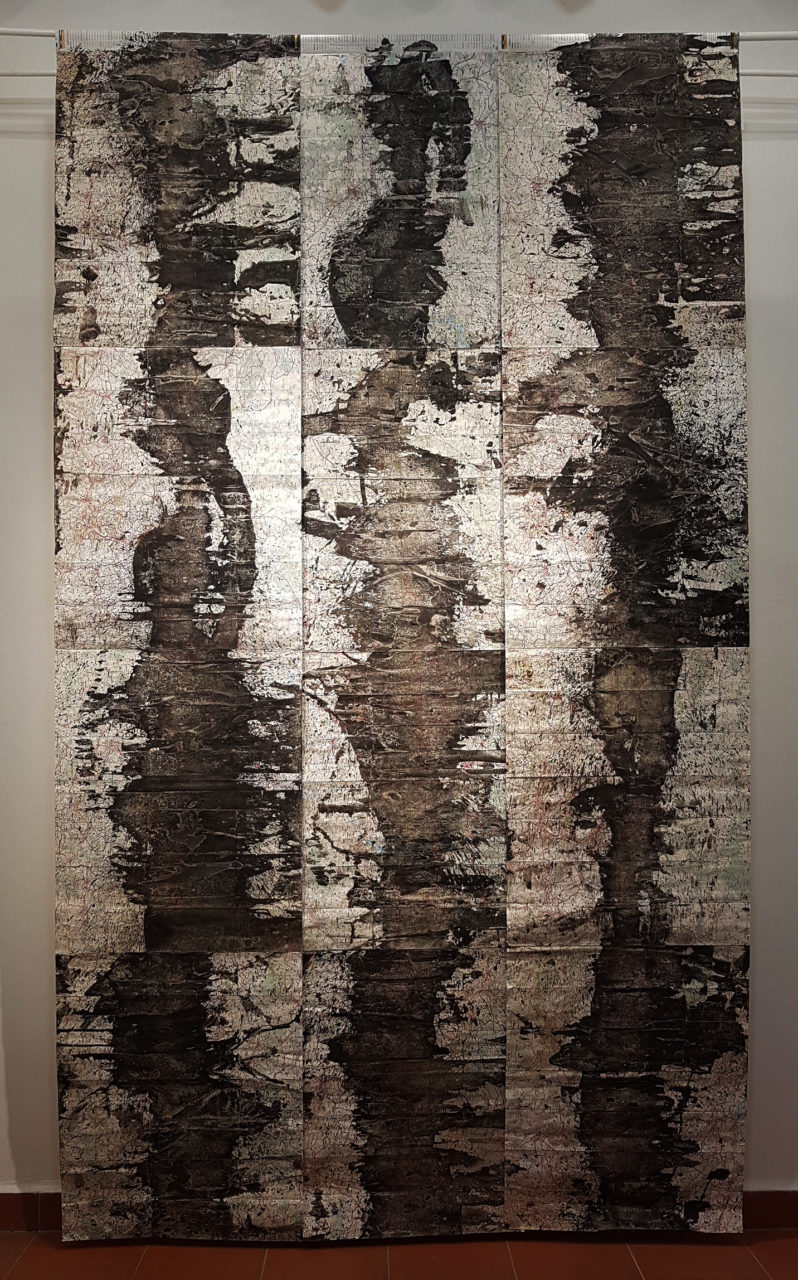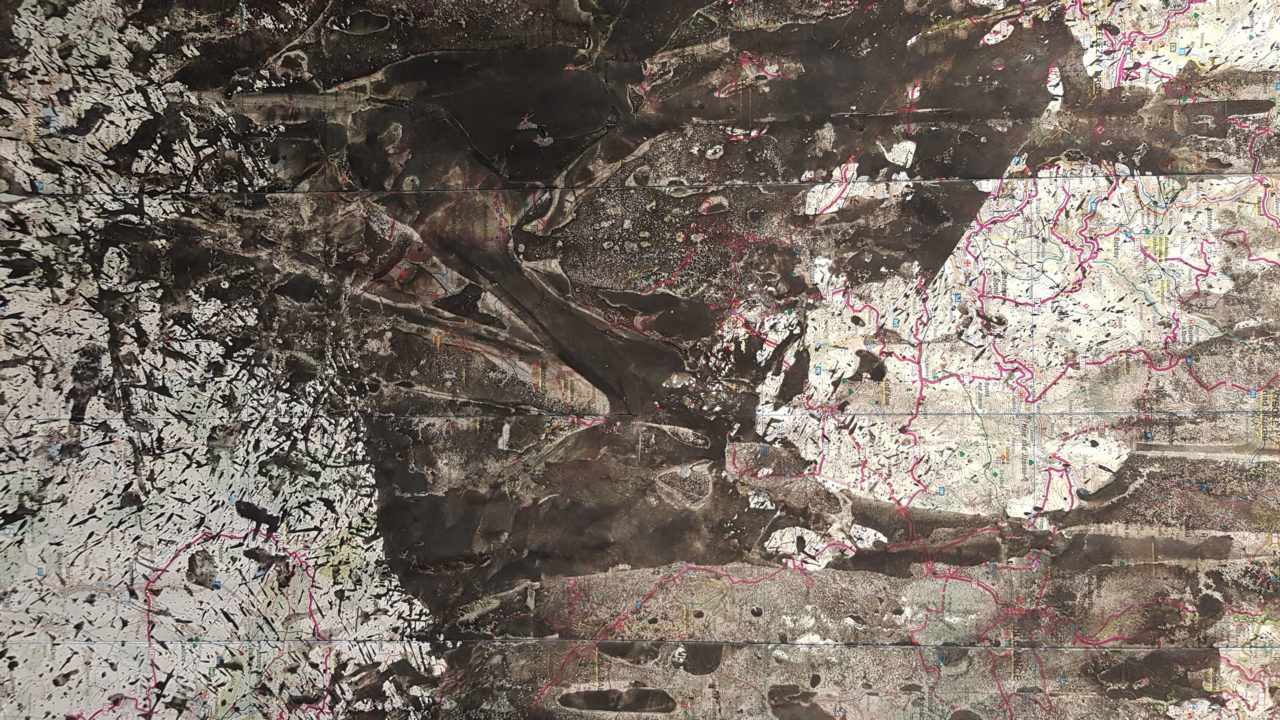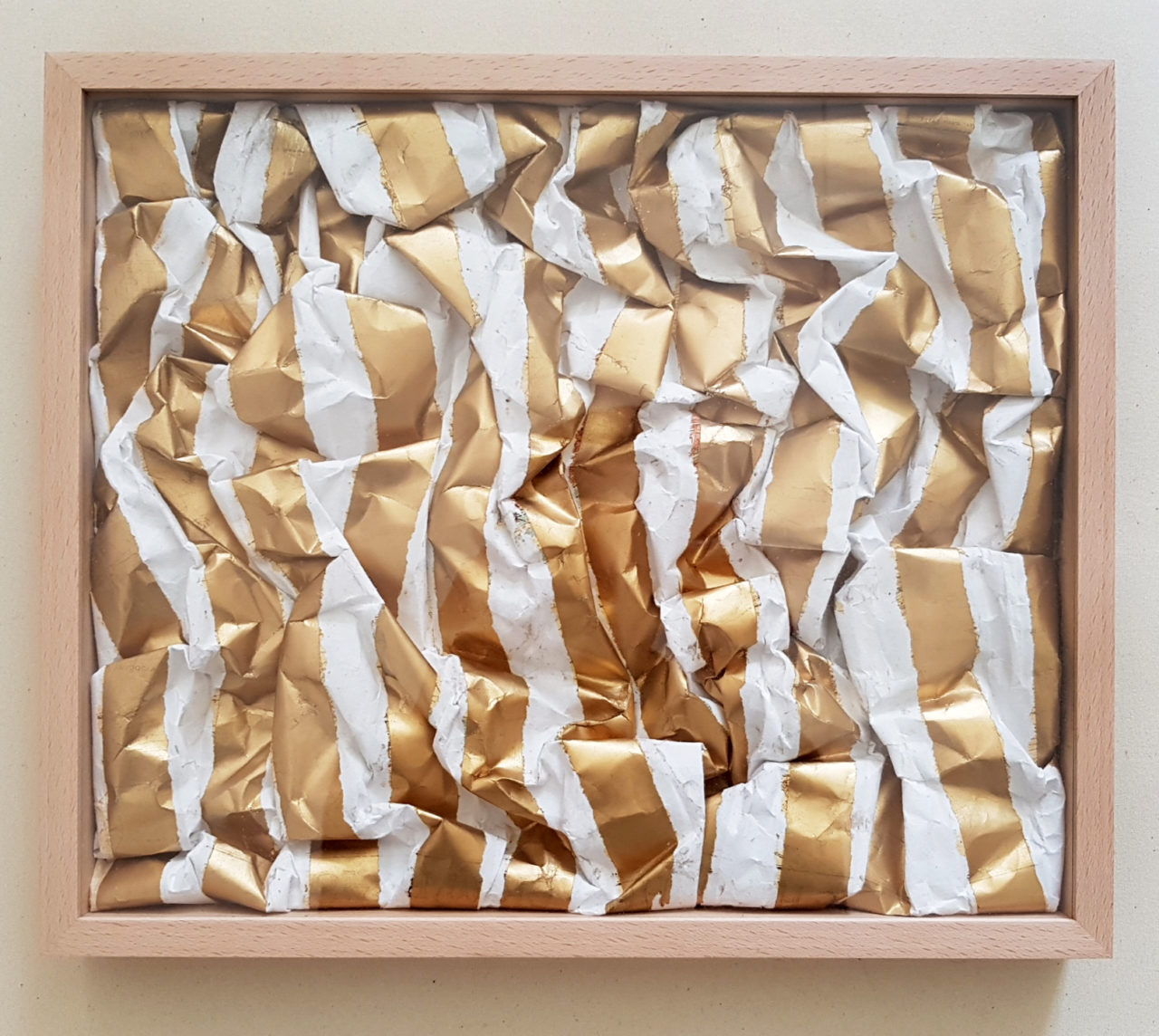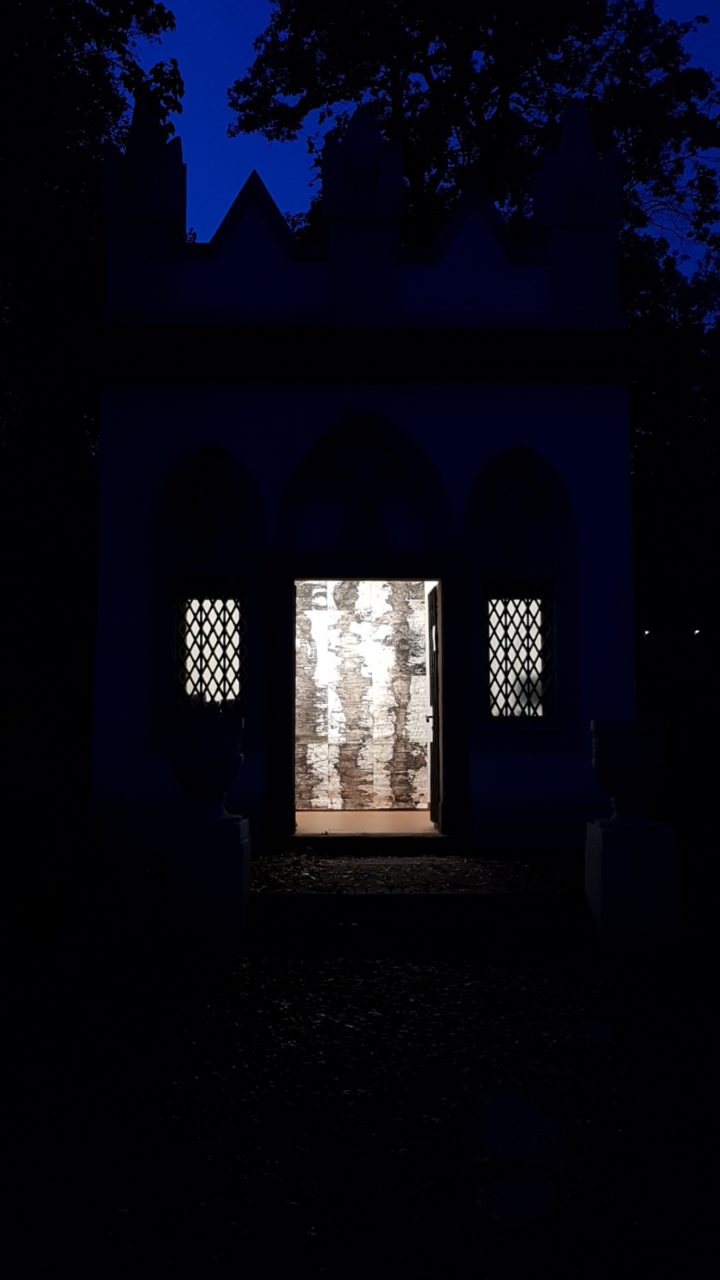Jana Kasalová: Fluidum
An opening of the exhibition on Tuesday, October 22, 2019, from 6 p. m.
The exhibition until November 16, 2019
curator: Lenka Sýkorová
photo: Jana Kasalová
Accompanying program on November, 16th October 2019: 2:00 – 4:00 p.m. – animation workshop for children, 4:00 – 5:00 p.m. – commented viewing of the exhibition and the exhibition activity of Klamovka Pavilion.
Exhibition motto: “The soul of man is like to water; From Heaven it cometh, To Heaven it riseth, And then returneth to earth, For ever alternating". ( J. W. Goethe)
Jana Kasalová is from the middle generation of artists—a generation with an intense interest in drawing. They explore its possibilities via various experiments in the form of poured ink or forays into the third dimension through the inclusion of bodily gestures. They simultaneously approach drawing at the level of a technical recording medium, which in Kasala’s case is expressed via links to cartography. And indeed she has made maps, as a means of understanding and simplifying reality, a part of the installation for her exhibition at Altán Klamovka. Jana Kasalová takes a keen interest in humans’ orientation in space and time and the importance of genius loci. Structures that were created to evoke a mood, most often in the 19th century—and today’s Klamovka park with its neo-gothic gazebo is definitely among such structures—thus naturally attract her. And so there is an intersection between the Klamovka gazebo itself and Kasalová’s interest in history, maps, and the work of flowing time. The exhibition’s name, Fluidum, is a reference both to the flowing of time and to flowing water, which—the locals say—played an important role in the park’s history, in the form of a spring. We can also approach water in yet a third way, as an important part of the human body. And the concept of the human body saw major transformations within the Czech culture of the 19th century, in connection with its physical, sensory, and mental essence at the level of how it experiences the world. In the work of Jana Kasalová, it is important that we not only see the drawings themselves, as an independent artistic language, but beyond this form, albeit experimentally conceived, that we also read the concept—the idea itself, which in this case is many-layered, with references to human experience in the given place. The work on exhibit here gives us a sense of the period at the close of classicism and the birth of romanticism, the Biedermeier period, both through direct references to a map of Prague from 1820, the year of the gazebo’s construction, and through decor from this period.
Jana Kasalová is a graduate of the Faculty of Fine Arts at Brno University of Technology. She studied under prof. Jiří Načeradský. She spent long years in France, Great Britain, and Spain, where she engaged in post-graduate art studies at Universidad Castilla-La Mancha in Cuence and Universidad Complutense in Madrid. In her art she very frequently works with the interweaving of zoomorphic themes in the context of cartography and the documenting of landscapes and cities. These documents, which border on being diary-like and are based on her feelings and first impressions, are significant for her work. They start from the supposition that after an initial feeling of loneliness comes a state wherein we are enriched with newfound experiences. Drawings of maps and animals, as notes from her travels, have helped her in feeling her way around new environments. You will also find an interest in Chinese and Japanese ink painting and calligraphy within her work.
Lenka Sýkorová
